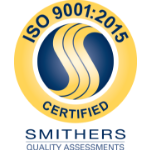Aluminum – “Green” Metal

Aluminum – the “Green” Metal
The greatest advantage of aluminum is the fact that it’s infinitely recyclable. This means that it can be recycled over and over again without losing quality or volume. In fact, about 75% of all aluminum ever produced is still in use today.
Aluminum is the third most abundant element in the earth’s crust after oxygen and silicon and accounts for 8% of its composition by weight. It is the most common metal on earth, 800 times more common than copper, which has been used for thousands of years.
- Light and Strong
The specific gravity of aluminum is only one-third that of steel. By alloying with other metals such as copper, magnesium or manganese, it can be substantially hardened and strengthened.
- Anti-Corrosive
On contact with oxygen, aluminum forms a thin transparent layer of aluminum oxide that protects the metal against corrosion.
- Highly Conductive
Aluminum is a good electrical and thermal conductor, as well as an efficient reflector of light and heat. Moreover, aluminum has a low and only temporary susceptibility to magnetic forces.
- Non-Flammable
As a non-flammable substance, aluminum is ideal for construction and transportation.
- Recyclable
The low melting point of aluminum makes it very easy to recycle. Only 5% of the energy used for the primary processing of aluminum is required to recycle it. This is one reason that environmentally friendly aluminum is often called the “green” metal.
- Long Life
The characteristics of aluminum are such that unit life is typically 50 years.
*Source: Alcan
LEED & Aluminum
LEED (Leadership in Energy and Environmental Design) is a program of the U.S. Green Building Council designed to provide “building owners and operators with a framework for identifying and implementing practical and measurable green building design, construction, operations and maintenance solutions.”* “LEED certification provides independent, third-party verification that a building … was designed and build using strategies aimed at achieving high performance … sustainable site development, water savings, energy efficiency, material selection and indoor environmental quality.”*
As of March 2012, there were 12,000 LEED certified commercial buildings in the U.S. While LEED certification is increasingly an objective for a wide range of new commercial buildings and major renovations, it is a requirement for many buildings developed by or for federal, state and local government.
Aluminum Extrusion & LEED
Due to aluminum’s fundamental properties, the nature of the extrusion process, and the structure of the North American extrusion industry, the use of aluminum extrusions in commercial buildings can contribute to LEED points (and certification) in a number of areas, including Energy Efficiency, Selection of Sustainable Materials, and Indoor Environmental Quality. Note: LEED assessment criteria are currently being revised and updated; the revisions, to be called LEED v4, are expected to be available during the first half of 2013. The following is based on current criteria, which will continue to be employed, in parallel with LEED v4 into 2015.
- EA1: Optimize Energy Efficiency: 1-19 points for increased performance
— Thermal barrier aluminum frames - EA2: On-Site Renewable Energy: 1-7 points
— Aluminum framing - MR2.1 and 2.2: Construction waste management: 1-2 points
— Aluminum recycling - MR4.1 and 4.2: Recycled Content: 1-2 points
— Recycled content in aluminum extrusions - MR5.1 and 5.2: Regional Materials: 1-2 points
— Recycled content recovered, reprocessed near project - ID1: Innovation in Design: 1 point
— For use of Cradle-to-Cradle certified material
*Source: www.usgbc.org/?DisplayPage.aspx?CMSPageID=1988
Air Enterprises Aluminum Suppliers Adhere to Strict ISO Standards
Our Aluminum supplier’s environmental management fully complies with the requirements of the ISO 14001 international environmental standard. The ISO 14001 standard covers management organization, production methods, processes and resources in order to make companies realize their environmental impact and how that impact can be reduced.
Learn more about our sustainable air handling solutions.

